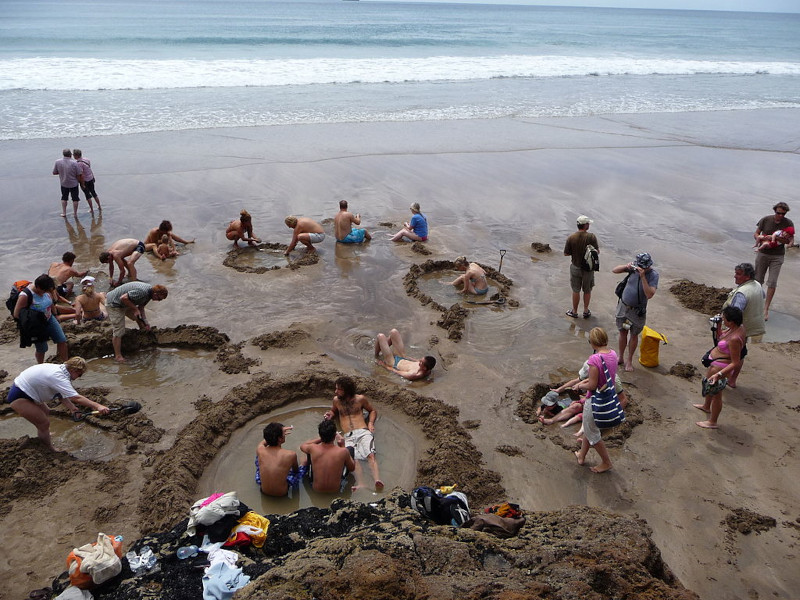Hot Water Beach Facts
- An outing to the extraordinary Hot Water Beach would likely be unlike any other trip to the beach you have ever had. In point of fact, it would likely be the one time you actually want to find yourself in hot water while on a trip to the beach.
- That’s due to the occurrence of a truly incredible circumstance. In fact, it remains utterly unique among beaches. This rather bold statement holds true due to a remarkable fact that sets this amazing getaway spot apart from other such locations.
- That’s because the aptly-named, and intriguing, beach represents an extremely unusual geological coincidence. Quite incredibly, the small stretch of beach actually forms an interface between the ocean and naturally occurring hot springs.
- During part of the day, the localized hot springs additionally remain submerged beneath the waves. There, these remain unapparent to visitors, at least temporarily. During a very specific period, however, something wondrous happens.
- That holds true since, for roughly two hours before low tide, and two hours afterward each day, the unique feature of Hot Water Beach appears. This obviously provides the site with a powerful appeal to many people, tourists and locals alike.
Related Articles
Hot Water Beach Physical Description
The magnificent site known as Hot Water Beach is actually separated into two sections. Although slightly shorter in length, at about 660 ft (200 m), the section to the south is considered the main beach. Meanwhile, the section to the north measures slightly longer.
The most spectacular thing about this setting understandably remains the feature for which it was named. That, of course, would be the presence of underground hot springs at the same location as the sands. These lie situated almost directly beneath the small beach.
Yet, on its own, the extremely hot water rarely does more than slightly bubble above the surface on its own. Direct human action is required to fully enjoy the experience. Digging even slightly into the sand of the beach will cause the cavity to be filled with hot water.
This action further occurs in the zone between the low and high water tidal reaches. The heated water of Hot Water Beach also filters up from two small fissures beneath the remarkable beach. These two sources additionally formed situated quite close to each other.
Amazingly, the water from the intriguing hot spring sometimes reaches potentially dangerous temperatures of as much as 147 F (64 C). Due to this fact, great care must be taken when visiting the location, in order to enjoy its wonders in safety and comfort.
Hot Water Beach Location, Tourism, and Dangers
The stunning site named Hot Water Beach formed in a region already well known for its marvels. That holds true due to the fact that it forms part of Mercury Bay, in New Zealand. More precisely, the wonder of Nature sits about 109 mi (175 km) from the city of Auckland.
Unsurprisingly, the uniqueness of this beach has led to an extreme degree of popularity among tourists. In fact, its distinctiveness served to make it a popular vacation spot for both local inhabitants and tourists. That serves as something of a mixed blessing, though.
As a result of this popularity, approximately 700,000 people visit the incredible site annually. Although magnificent to visit, the spot does have its perils, however. That’s because, even during low tide, the beach sits in close proximity to the waves.
These same waves can be large and often extremely strong, thus dangerous. As if this wasn’t enough, powerful rip currents also quite commonly occur throughout the immediate area. Impressive and imposing groupings of large rocks also sit just offshore.
Though lifeguards do watch the area, officials wisely recommend that only highly experienced swimmers or surfers venture beyond the beach itself. Sadly, several unwary visitors have perished in the strong rip currents commonly present at Hot Water Beach.
Features Sharing Its Region
Check out our other articles on Papakolea Beach, Mammoth Hot Springs, Haukadalur Geothermal Area, 6 Extremely Localized Invertebrates, Hellbender Salamander, Loggerhead Sea Turtle

